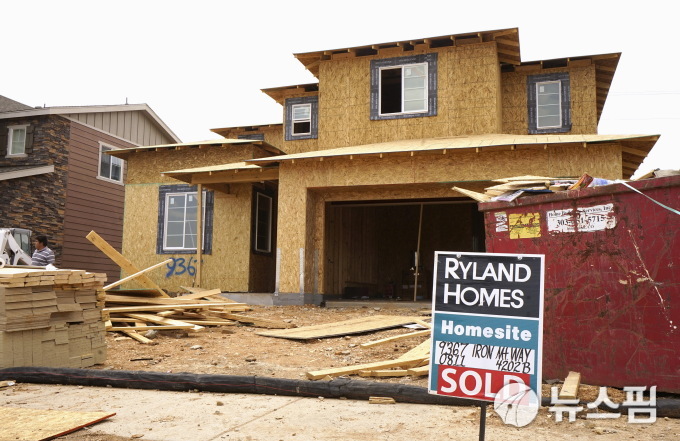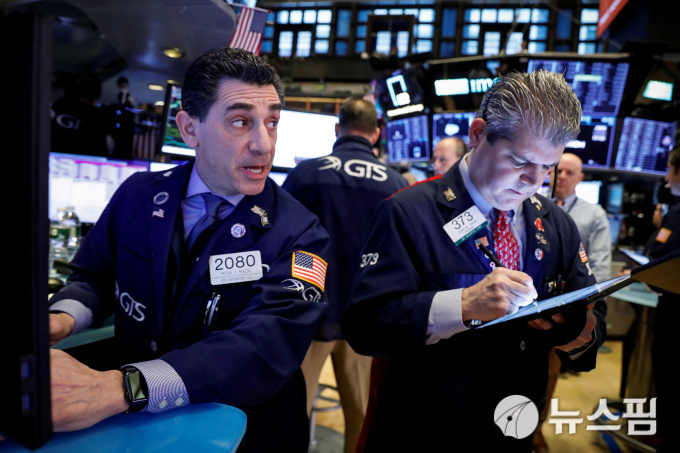10-year yield exceeds S&P500 dividend yield
Interest rate rises to 5 years, risky asset bubble collapse
[뉴욕=뉴스핌] Correspondent Hwang Sook-hye = The rise in US Treasury yields is a movement that spreads from long-term to short-term.
With the benchmark 10-year yield already close to Wall Street’s year-end forecast, the 5-year yield reached the highest level since March last year.
The asset market panic due to the wide jump in market interest rates. The New York stock market plunged, centering on the IT sector, which has a high valuation burden, and losses from bond funds and exchange-traded funds (ETFs) were snowballed.
Investors are very nervous as housing mortgage rates have risen sharply and the shock of so-called reflation trade will spread to real estate.
The rise in commodity prices, including international oil prices, and the aftermath of stimulus measures are predicted to fuel inflation, and the asset market is expected to continue to suffer for the time being due to rising interest rates.
At one time on the 25th (local time), the US 10-year Treasury bond yield was close to 1.5%. The 5-year yield rose to 0.75%. This is the highest since March last year.
The five-year break-even rate (BER), which reflects the bond market’s inflation projections, recently jumped to 2.38%. This surpassed the level before the 2008 US financial crisis.
Policymakers, including Fed Chair Jerome Powell, appear to be largely unconcerned about the risk of inflation, but the financial markets have a different voice.
The rising trend of interest rates has spread from long-term to 5-year bonds such as 10-year and 30-year bonds, which is interpreted as a cross section where traders in the bond market place weight on the possibility that the Federal Reserve’s rate hike will be accelerated.
In fact, according to industry sources, the Fed’s 25bp (1bp = 0.01% point) rate hike expected by the Wall Street Economist has been advanced from early 2024 to mid-2023 last month.
| US New York Stock Exchange Trader [사진=로이터 뉴스핌] |
BNY Melon caught the attention of investors by suggesting that the US 10-year Treasury bond yield could jump to 2.0% by April.
The New York Stock Market also slumped again. The Nasdaq index, which concentrated on IT large-cap stocks, fell 2.7% during the day and traded at around 13,230, while the Dow Jones index, consisting of large-cap S&P500 and blue chips, fell 1.8% and 1.2%, respectively.
The impact a 10-year yield of 1.5% could have on the New York Stock Exchange is not small. Given the fact that the dividend yield of the S&P500 index is 1.43%, 1.5% is pointed out that it is another dimension of bad news besides discounting future cash flows.
The panic with the bond market as its epicenter is not limited to stocks. The intraday dollar index fell by about 0.4%, but gold futures fell by more than 1% due to the increase in government bond yields, and hesitated to the level of $1778 per ounce.
A red light was also on the housing market. According to Freddie Mac, the 30-year mortgage fixed rate jumped to 2.97% on that day. This is the highest since August last year.
Long-term mortgage interest rates, which had not exceeded an all-time low of 2.65% until early January, jumped sharply along with government bond yields.
Anticipation of low interest rates despite the new coronavirus (Corona 19) pandemic last year, the US housing market showed strong resistance, and the possibility of a warm wind this year in the supply of vaccines was weighed, but the rise in interest rates is putting ash on the rosy outlook.
 |
| New house [사진=로이터 뉴스핌] |
Bankrate.com analyst Greg McBride told Bloomberg that “the overall bull market, especially in the suburbs, will be dampened by higher interest rates.”
Market experts, above all else, are showing a strong sense of caution against rising 5-year Treasury yields. Because traders jumped to the point where they stopped betting on the Fed’s rate hike.
It warns that if the uptrend spreads more broadly in the short term, it could impact risky assets as a whole, not only in the IT sector of the New York Stock Exchange, but also in emerging markets stocks and currencies.
Societe Generale, in its investment report, argued that “if interest rates continue to rise, the Fed’s unconventional monetary policy will result in the collapse of the fanned asset bubble.”
In an investment report, Ned David Research warned, “The rise in interest rates triggered by the sentiment of rising inflation is expected to shake the asset market by raising not only the nominal interest rate but also the real interest rate as the economy recovers.”
–

:quality(85)//cloudfront-us-east-1.images.arcpublishing.com/infobae/TGIF4ZCGCRAEZNPYVMYTEDQYPE.jpg)
:strip_exif()/i/2003664468.jpeg?f=fpa)